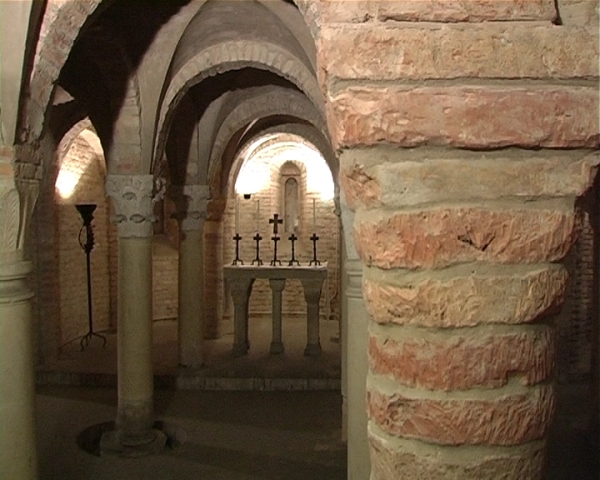HISTORY
The crypt of San Zama was part of the monastery dedicated to Saints Naborre and Felice, today the seat of the Military Commando of the Italian Army in Emilia Romagna, and formerly a military hospital. The history of the crypt is tied to the surge of the first Christian communities. It was long believed that San Zama was the first Cathedral, because it was here that the first Bishops of Bologna were buried, starting with Zama, himself. More likely, as was the case for the complex of Santo Stefano, was that the area contained one of the city’s early Christian cemeteries, as a result of the prohibition until the 5th century to bury the dead within the city walls.
According to legend, Saint Peter himself dedicated the site, while Zama was responsible for its foundation. The Bishop Faustiniano, Zama’s successor, augmented the sanctuary’s fame, building a larger basilica, but also rededicating it to Saints Naborre and Felice, martyrs of the Milanese Church, on which Bologna depended. All the Bishops of the Bolognese diocese were buried here until the 8-9th centuries, with the exception of San Petronio, who was buried in the complex of Santo Stefano.
The abbey is not mentioned again until the 10th century, when its sad state of disrepair was lamented. After the year 1000, the arrival of Benedictine monks breathed new life into the complex. The monks rebuilt the church in Romanesque forms, including the crypt, and constructed the monastery complex. Over the course of the 14th century, they also added the campanile and the sacristy. In this period, the convent, called the Abbadia, became one of the most important study centers of the city. But the monastery got caught up in the 15th-century fights between the Bolognese lords and the Papacy, leading to its abandon by the Benedictines and its consequent ruin. After a century of decay, the pope gave the complex to the Clares. The crypt is the only remaining Romanesque part of the whole complex.





